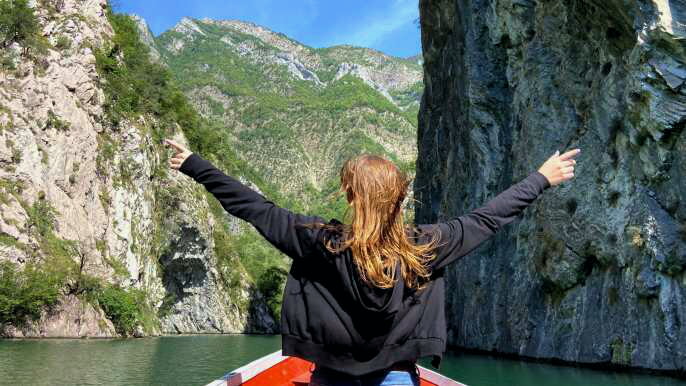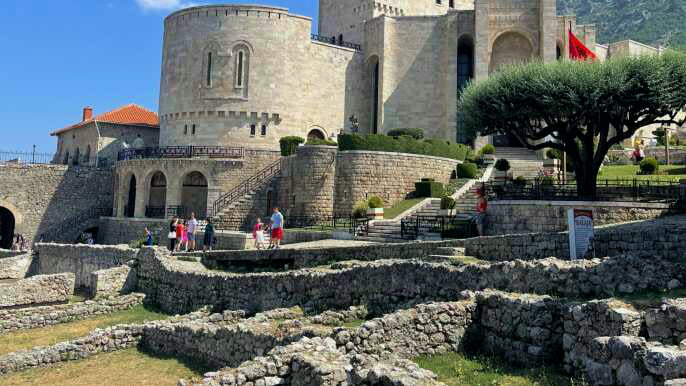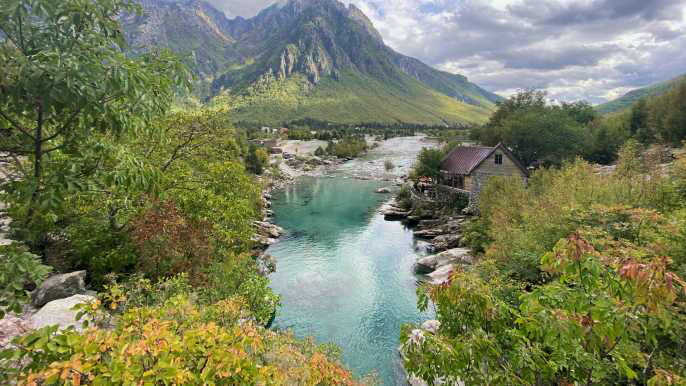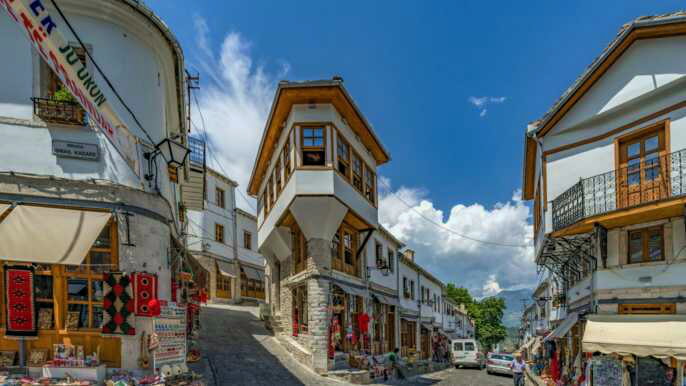Berat is known for its castle, but there is a lot more to this UNESCO World Heritage Site than just the towers. There are also some interesting museums and churches to see in the area.
Another great thing to do is visit the Onufri National Museum. Here you will find works of famous Albanian icons painter Onufri Argitis.
Berat Castle
Berat Castle is Albania’s largest fortress and unlike most other ruins in the Balkans, it’s remarkably intact. It’s a vast citadel complex of stone streets, houses and Byzantine churches interspersed with ruins from various epochs.
While you’re at it, climb to the top of one of the old bastions for panoramic views of the whole city and its twin peaks, Gorica on the southern side and Mangalemi in the north. It’s a steep, slick walk up from the lower town but it’s totally worth it for the atmosphere.
The Church of Saint Trinity (Kisha Shen Triadha) is one of the most important buildings in Berat and combines Western and Byzantine elements. Built during the 13th and 14th centuries, it’s a stunning example of medieval architecture that truly reflects its time.
The Onufri Iconographic Museum is another must-visit, showcasing the work of this 16th-century icon painter. Situated in the Assumption of Saint Mary Church, it’s a great way to spend a few hours after you’ve finished exploring the castle.
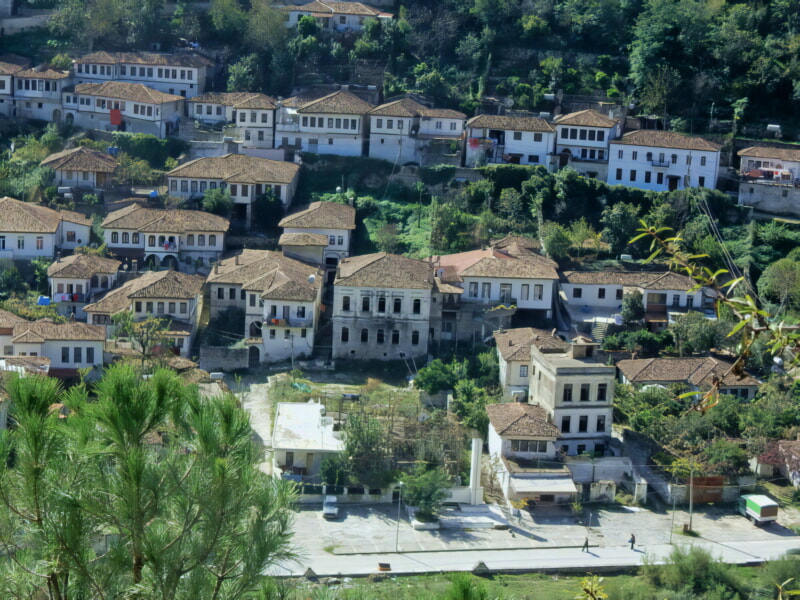
Holy Trinity Church
Located within the medieval Kala Quarter (Kalaja) in Berat, one of the oldest parts of the city, is the Holy Trinity Church. Often seen in pictures of Berat, this medieval Byzantine structure is shaped like a cross with a dome and is a Cultural Monument of Albania.
This impressive Orthodox church was built in the 14th century, and is a fantastic place to see while visiting Berat. It's located within the Berat Castle, and the interiors once boasted beautiful frescoes.
While the ruins of the church are now inaccessible, it's still a must-visit during your stay in Berat. Other interesting landmarks in the Berat Castle include the Red Mosque and the Onufri Iconographic Museum. The latter is named after the 16th-century icon painter Onufri, who was active in both Albania and North Macedonia. It houses a collection of icons and artworks salvaged from the ruins of religious buildings. It is also a good place to take in a beautiful panoramic view of Berat.
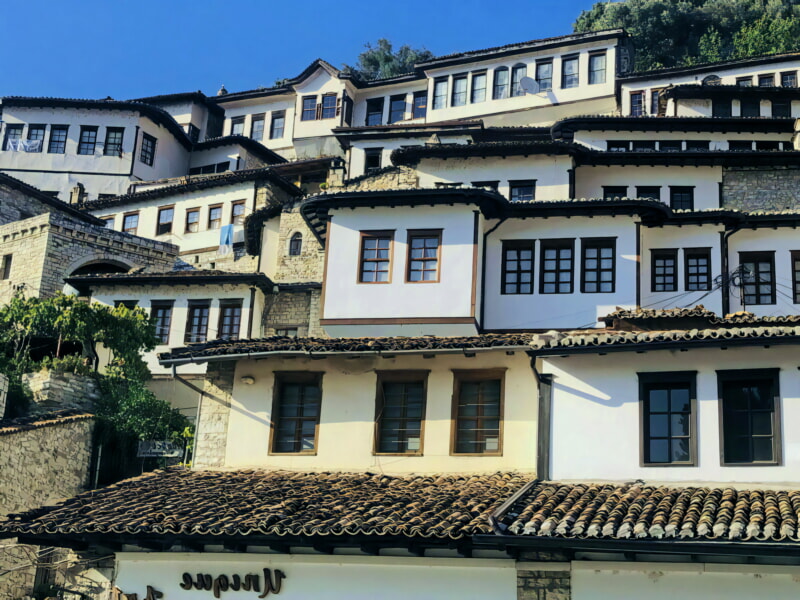
House Museum Qako
The House Museum Qako is a fascinating place to visit and see what life was like in the city of Berat in the 19th century. It's made of yellow stone in classic colonial style and is divided into a number of rooms, including a guest room, kitchen, garage, horse stable and servant quarters.
The museum also features a hand loom and small household objects, such as woolen throws and tapestry, that were used by the locals in their everyday life. It's an interactive experience that teaches visitors about the history of Berat and its people, and also a great place to enjoy a quiet stroll in the lush garden.
The House Museum Qako is open daily except on Wednesdays, from 9 am - 4 pm. Photography is prohibited within the museum premises and NICs are required upon entry. It's a good idea to book a tour in advance so that you can be sure of the timing and the experience will be more memorable.

Bulevardi Republika
A stroll along the Bulevardi Republika is a great way to get an idea of the city's history and culture. This pedestrian walkway is lined with shops and restaurants.
- A few blocks away from the castle, Bulevardi Republika offers visitors a taste of Berat's ancient history and culture. The ground floor of the building is a replica of an old medieval bazaar, lined with embroidery and woodcarving shops.
- There are also several cafes and restaurants that offer visitors a great place to rest and relax after touring the castle and the surrounding areas. The building also houses a museum, which contains historical and cultural memorabilia from Berat.
- The museum is open from 10:00am - 4:00pm, and admission is free. The museum focuses on the history of Berat and its people, with particular attention to the development of the city's arts and crafts. You can view a range of artifacts, including traditional clothing, jewelry and pottery, as well as historical photos and documents.
